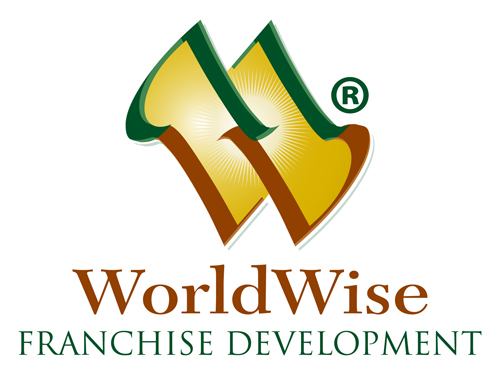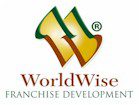Rollovers as Business Start-Ups Compliance Project
What is a ROBS? ROBS is an arrangement in which prospective business owners use their retirement funds to pay for new business start-up costs. ROBS plans, while not considered an abusive tax avoidance transaction, are questionable because they may solely benefit one individual – the individual who rolls over his or her existing retirement funds to the ROBS plan in a tax-free transaction. The ROBS plan then uses the rollover assets to purchase the stock of the new business.
Promoters aggressively market ROBS arrangements to prospective business owners. In many cases, the company will apply to IRS for a favorable determination letter (DL) as a way to assure their clients that IRS approves the ROBS arrangement. The IRS issues a DL based on the plan’s terms meeting Internal Revenue Code requirements. DLs do not give plan sponsors protection from incorrectly applying the plan’s terms or from operating the plan in a discriminatory manner. When a plan sponsor administers a plan in a way that results in prohibited discrimination or engages in prohibited transactions, it can result in plan disqualification and adverse tax consequences to the plan’s sponsor and its participants.
Employee Plans ROBS Project
EP initiated a ROBS project in 2009 to:
- Define traits of compliant versus noncompliant ROBS plans;
- Identify ROBS plans that are noncompliant and take action to correct them; and
- Use results to design compliance strategies focusing on identified issues and trends (for example, Employee Plans Compliance Resolution System, Fix-It Guides, Web-based information, newsletters, and speeches).
Using compliance checks, we initially focused on companies that sponsored a plan and received a DL but didn’t file a Form 5500, Annual Return/Report of Employee Benefit Plan, or Form 5500-EZ, Annual Return of One-Participant (Owners and Their Spouses) Retirement Plan, and/or Form 1120, U.S. Corporation Income Tax Return.
Our contact letter to plan sponsors asked questions about the ROBS plan’s recordkeeping and information reporting requirements, including:
- the plan’s current status
- plan contribution history
- information on the rollover or direct transfer of the assets into the ROBS plan
- participant information
- stock valuation and stock purchases
- general information about the business itself
- why no Form 5500 or 5500-EZ and/or Form 1120 were filed
We always invite a plan sponsor to furnish any other documents or materials that they believe will be helpful for us to review as part of the compliance check.
ROBS Project Findings
New Business Failures
Preliminary results from the ROBS Project indicate that, although there were a few success stories, most ROBS businesses either failed or were on the road to failure with high rates of bankruptcy (business and personal), liens (business and personal), and corporate dissolutions by individual Secretaries of State. Some of the individuals who started ROBS plans lost not only the retirement assets they accumulated over many years, but also their dream of owning a business. As a result, much of the retirement savings invested in their unsuccessful ROBS plan was depleted or ‘lost,’ in many cases even before they had begun to offer their product or service to the public.
Preliminary results from the ROBS Project indicate that, although there were a few success stories, most ROBS businesses either failed or were on the road to failure with high rates of bankruptcy (business and personal), liens (business and personal), and corporate dissolutions by individual Secretaries of State. Some of the individuals who started ROBS plans lost not only the retirement assets they accumulated over many years, but also their dream of owning a business. As a result, much of the retirement savings invested in their unsuccessful ROBS plan was depleted or ‘lost,’ in many cases even before they had begun to offer their product or service to the public.
Not Filing Form 5500 or Form 1120
Many ROBS sponsors did not understand that a qualified plan is a separate entity with its own set of requirements. Promoters incorrectly advised some sponsors they did not have an annual filing requirement because of a special exception in the Form 5500-EZ instructions. The exception applies when plan assets are less than a specified dollar amount and the plan covers only an individual, or an individual and his or her spouse, who wholly own a trade or business, whether incorporated or unincorporated. In a ROBS arrangement, however, the plan, through its company stock investments, rather than the individual, owns the trade or business. Therefore, this filing exception does not apply to a ROBS plan and the annual Form 5500 or 5500-EZ (5500-SF for filing electronically) is still required.
Many ROBS sponsors did not understand that a qualified plan is a separate entity with its own set of requirements. Promoters incorrectly advised some sponsors they did not have an annual filing requirement because of a special exception in the Form 5500-EZ instructions. The exception applies when plan assets are less than a specified dollar amount and the plan covers only an individual, or an individual and his or her spouse, who wholly own a trade or business, whether incorporated or unincorporated. In a ROBS arrangement, however, the plan, through its company stock investments, rather than the individual, owns the trade or business. Therefore, this filing exception does not apply to a ROBS plan and the annual Form 5500 or 5500-EZ (5500-SF for filing electronically) is still required.
Specific Problems with ROBS
Some other areas the ROBS plan could run into trouble:
- After the ROBS plan sponsor purchases the new company’s employer stock with the rollover funds, the sponsor amends the plan to prevent other participants from purchasing stock.
- If the sponsor amends the plan to prevent other employees from participating after the DL is issued, this may violate the Code qualification requirements. These types of amendments tend to result in problems with coverage, discrimination and potentially result in violations of benefits, rights and features requirements.
- Promoter fees
- Valuation of assets
- Failure to issue a Form 1099-R, Distributions From Pensions, Annuities, Retirement or Profit-Sharing Plans, IRAs, Insurance Contracts, etc., when the assets are rolled over into the ROBS plan
Additional resources
- Guidelines regarding rollovers as business start-ups, Memorandum from Michael Julianelle, Director, Employee Plans Rulings & Agreements (October 1, 2008)


